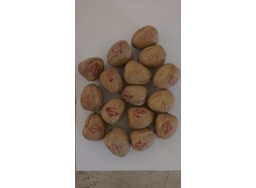Walnuts
 Any of about 20 species of deciduous trees constituting the genus Juglans of the family Juglandaceae, native to North and South America, southern Europe, Asia, and the West Indies. The trees have long leaves with 5 to 23 short-stalked leaflets; male and female reproductive organs are borne in different, petalless flower clusters on the same tree; the twigs contain a many-chambered pith; and the fruit is a woody nut enclosed in a thick husk. Black walnut (J. nigra) of eastern North America and English, or Persian, walnut (J. regia), native to Iran, are valuable timber trees that produce edible nuts. The butternut (J. cinerea) of eastern North America also produces an edible nut. See butternut.
Any of about 20 species of deciduous trees constituting the genus Juglans of the family Juglandaceae, native to North and South America, southern Europe, Asia, and the West Indies. The trees have long leaves with 5 to 23 short-stalked leaflets; male and female reproductive organs are borne in different, petalless flower clusters on the same tree; the twigs contain a many-chambered pith; and the fruit is a woody nut enclosed in a thick husk. Black walnut (J. nigra) of eastern North America and English, or Persian, walnut (J. regia), native to Iran, are valuable timber trees that produce edible nuts. The butternut (J. cinerea) of eastern North America also produces an edible nut. See butternut.
A black walnut tree usually is between 20 and 30 m (about 65 and 100 feet) tall and has a trunk about 60 to 90 cm (2 to 3 feet) in diameter, with a deeply furrowed, dark brown or grayish black bark. The leaves, about 30 to 60 cm long, consist of 15 to 23 leaflets borne on very short stalks. The nut contains a sweet, oily seed and is enclosed in a yellow-green, hairy husk. Black walnut trees are also planted for ornament and are cultivated for the wood and for a dye found in the fruit husks. Black walnut grows slowly, maturing on good soils in about 150 years; it may have a life span of more than 250 years.
The English walnut, cultivated for many years in England, is now grown in parts of North and South America, both as an ornamental and for commercial nut production. A tree produces fine-quality nuts only on fertile, well-drained soils of medium-heavy texture. The round-tipped leaflets have smooth margins, and the terminal leaflet is the largest. The leaflets of native North American walnuts are largest toward the centre of the leaf, and have toothed margins.
The dark, fine-grained wood of English and black walnuts is used for furniture, panelling, and gunstocks.


